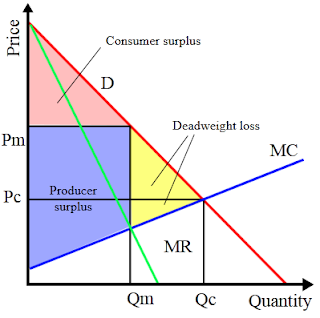Herbivore men briefly explained
The Japanese subculture of "herbivore men" seems to hit the news every so often. Here is a recent example in the Guardian:
Why have young people in Japan stopped having sex? What exactly is going on over there?
I'm no expert in Japanese culture, but my coblogger on
The Asexual Agenda, Queenie, is an expert.* I will defer to what she's written about
herbivore men. My summary: In Japan, men are expected to be "carnivores", aggressively pursuing relationships with women. But many men in metropolitan areas have become "herbivores", being less assertive in relationships, more sensitive, and even willing to be
friends with women (in Japan this is a big deal). And there's probably other stuff as well, like their attitude towards money, jobs, and fashion. Women of course are expected to be herbivores to begin with, although there is also talk of carnivore women.
*She's actually an expert in Japanese religion, but close enough.
In Japan, herbivore men are sometimes the subject of moral panic because they're not forming relationships, are defying Japanese gender roles, and may be contributing to the declining birth rate. Cry me a river I say. People aren't obligated to make babies just to uphold the national birth rate, and if Japanese people really wanted population growth so badly they could try being less racist and accept more immigrants.
In the English speaking world, the reaction to herbivore men is... different. Sometimes, the reactions really say more about our own culture than about Japanese culture.
Here I will briefly show the reactions coming from three different groups: mainstream news, asexuals, and men's rights activists.
Mainstream news reactions
In Japan, the moral panic over herbivore men isn't really about sex. It's about relationships. If herbivore men formed sexless relationships, that would be entirely ordinary in Japanese culture (although I think it's assumed that once a couple gets married, they will immediately start producing children). But these men aren't forming relationships at all!
Of course, in English news sources, it's all about the sex. You can see from the titles of the stories:*
Why have young people in Japan stopped having sex?
Japan's 'herbivore men' -- less interested in sex, money
The Herbivore's Dilemma: Japan panics about the rise of "grass-eating men," who shun sex, don't spend money, and like taking walks.
No Sex, Please, We're Young Japanese Men
Japanese leads the way in sexless love
*There are also a few counterexamples. Notably, NPR focuses on their rebellion against gender roles.
Ironically, if you look closely at what the Japanese correspondents actually say, rather than what the news source says, you can see some of the truth leaks through. In
The Guardian, a correspondent says:
...many are turning to what she terms "Pot Noodle love" – easy or instant
gratification, in the form of casual sex, short-term trysts and the
usual technological suspects: online porn, virtual-reality
"girlfriends", anime cartoons.
Wait, if it's about the sex, what's the problem with casual sex and short-term trysts? Answer: it's not really about the sex, but English news sources seem to think it is.
Asexual reactions
Generally speaking, asexuals aren't likely to confuse disinterest in sex with disinterest in relationships, because we talk about that distinction all the time. But news sources say herbivore men are rejecting sex, so you can hardly blame asexuals for taking this at face value.
If you think herbivore men are avoiding sex, then the parallels with asexuality are obvious. A few people think it might be related:
"I've been thinking that asexuals are probably not the tiny minority that
we think we are. Perhaps Japan is simply the first country to come to
terms with these feelings. "
But this really strains credulity. Asexuality obviously cannot account for the 60% of urban young men who are not in romantic relationships. There are clearly lots of other better explanations. Many asexuals feel compelled to point this out:
"I don't think they're asexual, they're just choosing to focus their priorities elsewhere."
"We really need to keep in mind here, that not showing an interest in sex does not necessarily equal asexuality."
But even though herbivore men are not identified with asexuality, the moral panic over herbivore men is identified as being similar to the moral panic over asexuals.
"That little part of me that secretly wants everyone else to be asexual, too, makes me root for those Japanese guys, though, and get annoyed when everyone always calls this trend a "problem." "
"If it makes a lot of practical sense to choose that lifestyle and those
people who do so feel happy and fulfilled, why the hell is everyone
freaking out?! Oh, that's right, because having sex is a Basic Human
Need and those people who have little interest in sex are clearly
unhealthy and need help. "
All these comments come from threads on AVEN's world watch forum.
Men's Rights Activist reactions
When my Queenie wrote for
The Asexual Agenda on herbivore men, I was surprised to see an influx of wayward googlers with MRA (Men's Rights Activist) inclinations. In particular, I remember there was someone who writes for
A Voice For Men who seemed to think that we were accusing herbivore men of being misogynistic, even though Queenie's piece was obviously sympathetic to herbivore men. But perhaps I shouldn't make too much of people being confused on the internet. At least MRAs seem to understand that herbivore men aren't about rejecting sex.
If you're unfamiliar with MRAs, there was a recent article in
The Beast about them. MRAs are one of the most malicious groups on the internet, and basic human decency compels me to abhor them. However, this doesn't mean that every particular thing they ever say or advocate is wrong, and for the purposes of this post, I will consider what MRAs say about herbivore men in isolation from other things they say.
In the MRA world, herbivore men draw obvious comparisons to Men Going Their Own Way (MGTOW). MGTOW are "going on strike" on marriage and fatherhood, because they realize the deck is stacked against them:
Men are beginning to recognise their appalling vulnerability when it
comes to dealing with the opposite sex, and they are individually waking
up to the ridiculous risks they face. Almost 70 per cent of divorces
are now initiated by women, and typically it is the man who stands to
lose everything — his children, his home, his future income and his
reputation. With suicide being the biggest killer of young men in the
UK, and with those experiencing relationship breakdown being at the
highest risk, he also stands to lose his life.
...
If we want a glimpse of what the future may hold, we only need to look
to Japan where those who reject their traditional masculine role are
referred to as "grass eaters" or "herbivore men".
-Why are men going their own way when it comes to relationships?
Another vlogger suggests that herbivore men might be caused by Japan's change to the Western family court system after WWII.
MRAs also seem to draw herbivore men in opposition to feminism:
...apparently, the feminist situation got so bad that Japanese men actually get more pleasure from anime and video game characters than from real women.
...The women aren't happy, and some have labelled the behaviour "misogyny"
-The situation of men in Japan
But this opposition appears not to reflect reality. Searches for herbivore men and feminism mostly turn up MRA sites talking about how they're opposed. I found very few feminists even talking about herbivore men. There's one
Jezebel piece titled
Japan's "Herbivore Men" Refuse To Adhere To Stereotypes which vaguely implies approval of the trend. I think because feminists often criticize MGTOWs (and it's not hard to see why given the above quotes), and because MGTOWs sympathize with herbivore men, they assume too quickly that feminists would also criticize herbivore men.
Summary
Herbivore men are an interesting generational trend in Japan. In English mainstream media, what really grabs attention is the idea that they are not having sex (even though this is not the part that is considered shocking in Japan). In asexual spaces, asexuals see the panic over herbivore men as being similar to panic over asexuality. In MRA spaces, herbivore men are associated with MGTOWs, and are thought to have similar motivations.
.jpg)
.jpg)
.jpg)










.jpg)




